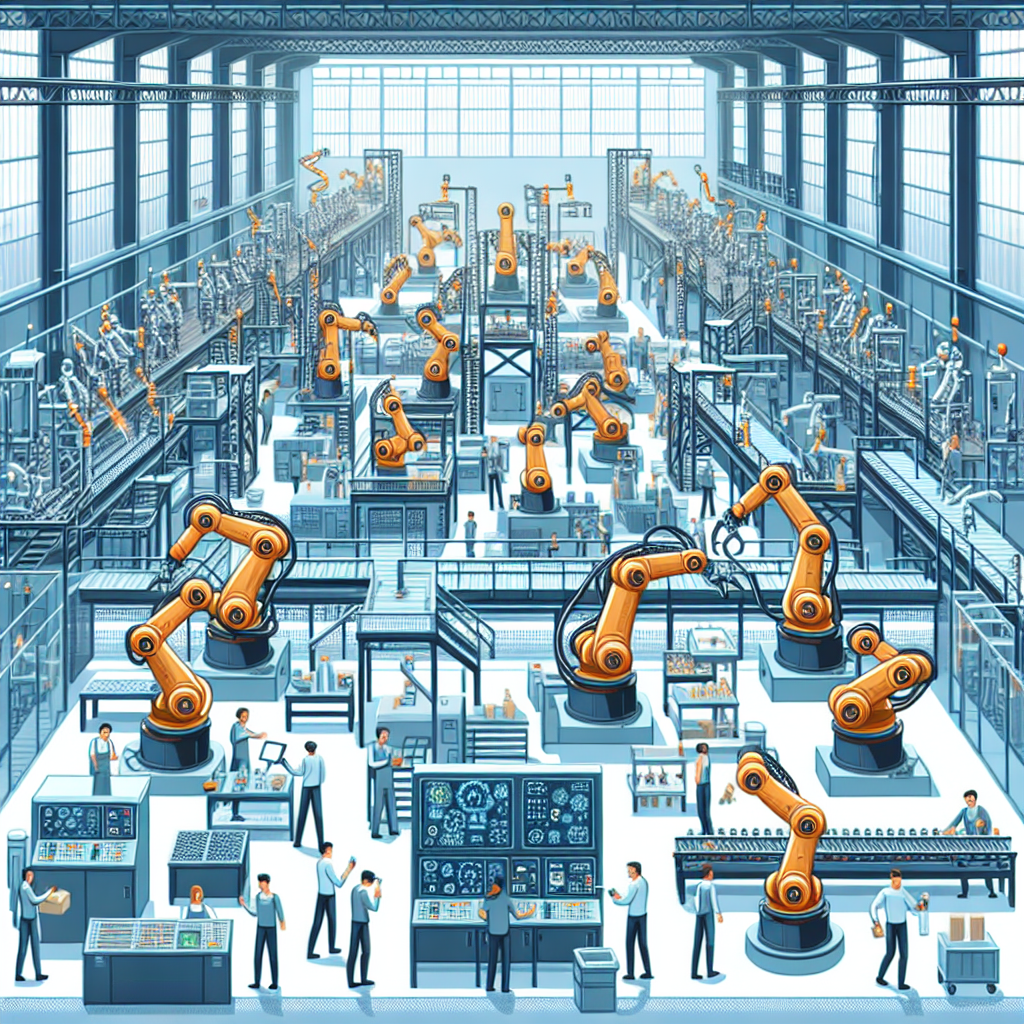AI and Robotics in the Manufacturing Sector: Revolutionizing the Industry
Artificial Intelligence (AI) and Robotics have been revolutionizing the manufacturing sector in recent years, offering new opportunities for increased efficiency, productivity, and cost savings. These technologies have the potential to transform the way products are made, creating a more streamlined and automated manufacturing process. In this article, we will explore the impact of AI and Robotics in the manufacturing sector and how they are changing the industry.
AI in Manufacturing
AI has been making waves in the manufacturing sector by offering predictive analytics, process optimization, and predictive maintenance. With the help of AI, manufacturers can analyze large amounts of data to identify patterns, predict outcomes, and make informed decisions. This allows for more efficient production processes, reduced downtime, and improved product quality.
One of the key applications of AI in manufacturing is predictive maintenance. By analyzing data from sensors and machines, AI can predict when equipment is likely to fail and schedule maintenance before a breakdown occurs. This helps to prevent costly downtime and ensures that production runs smoothly.
AI is also being used to optimize production processes. By analyzing data from various sources, such as sensors, machines, and production lines, AI can identify bottlenecks, inefficiencies, and areas for improvement. This allows manufacturers to make real-time adjustments to their processes, leading to increased productivity and reduced waste.
Another area where AI is making an impact in manufacturing is quality control. AI-powered systems can analyze images, videos, and sensor data to detect defects and anomalies in products. This helps to ensure that only high-quality products are shipped to customers, reducing the risk of product recalls and improving customer satisfaction.
Robotics in Manufacturing
Robotics has been a mainstay in the manufacturing sector for decades, but recent advancements in technology have made robots more versatile, flexible, and intelligent. Today, robots are being used in a wide range of manufacturing processes, from assembly and welding to packaging and material handling.
One of the key benefits of robotics in manufacturing is increased efficiency. Robots can perform repetitive tasks with speed and precision, leading to faster production cycles and higher output. This allows manufacturers to scale up production without increasing labor costs, making them more competitive in the market.
Robots are also being used to improve worker safety in manufacturing facilities. By taking over hazardous and strenuous tasks, robots can reduce the risk of accidents and injuries on the factory floor. This not only protects workers but also reduces the cost of workplace injuries for manufacturers.
Another advantage of robotics in manufacturing is the ability to customize products on-demand. With the use of robotic arms and 3D printing technologies, manufacturers can produce customized products quickly and cost-effectively. This allows them to meet customer demands for personalized products and stay ahead of the competition.
AI and Robotics Working Together
While AI and Robotics offer unique benefits on their own, the true power of these technologies lies in their integration. By combining AI with Robotics, manufacturers can create smart and autonomous systems that can adapt to changing conditions, learn from experience, and make decisions on their own.
For example, AI-powered robots can learn to optimize their movements and tasks based on real-time data from sensors and cameras. This allows them to work more efficiently, avoid collisions, and collaborate with human workers in a safe and productive manner. This level of intelligence and autonomy is transforming the manufacturing industry, enabling manufacturers to produce products faster, cheaper, and with higher quality.
FAQs
Q: How are AI and Robotics being used in the manufacturing sector?
A: AI and Robotics are being used in the manufacturing sector to improve efficiency, productivity, and quality. AI is being used for predictive maintenance, process optimization, and quality control, while Robotics is being used for tasks such as assembly, welding, and material handling.
Q: What are the benefits of using AI and Robotics in manufacturing?
A: The benefits of using AI and Robotics in manufacturing include increased efficiency, productivity, and quality, reduced downtime and waste, improved worker safety, and the ability to customize products on-demand.
Q: Will AI and Robotics replace human workers in the manufacturing sector?
A: While AI and Robotics are automating some tasks in the manufacturing sector, they are also creating new opportunities for human workers to collaborate with intelligent machines. The future of manufacturing will likely involve a mix of human and machine workers working together to create innovative products.
Q: How can manufacturers incorporate AI and Robotics into their operations?
A: Manufacturers can incorporate AI and Robotics into their operations by investing in smart sensors, AI algorithms, and robotic systems that can be integrated into their production processes. Training employees to work with these technologies and implementing a culture of innovation and continuous improvement are also key factors in successful adoption.
In conclusion, AI and Robotics are transforming the manufacturing sector by offering new opportunities for increased efficiency, productivity, and cost savings. By harnessing the power of these technologies, manufacturers can stay ahead of the competition, meet customer demands for personalized products, and create a more sustainable and competitive industry. The future of manufacturing is smart, automated, and intelligent, and AI and Robotics are leading the way.

